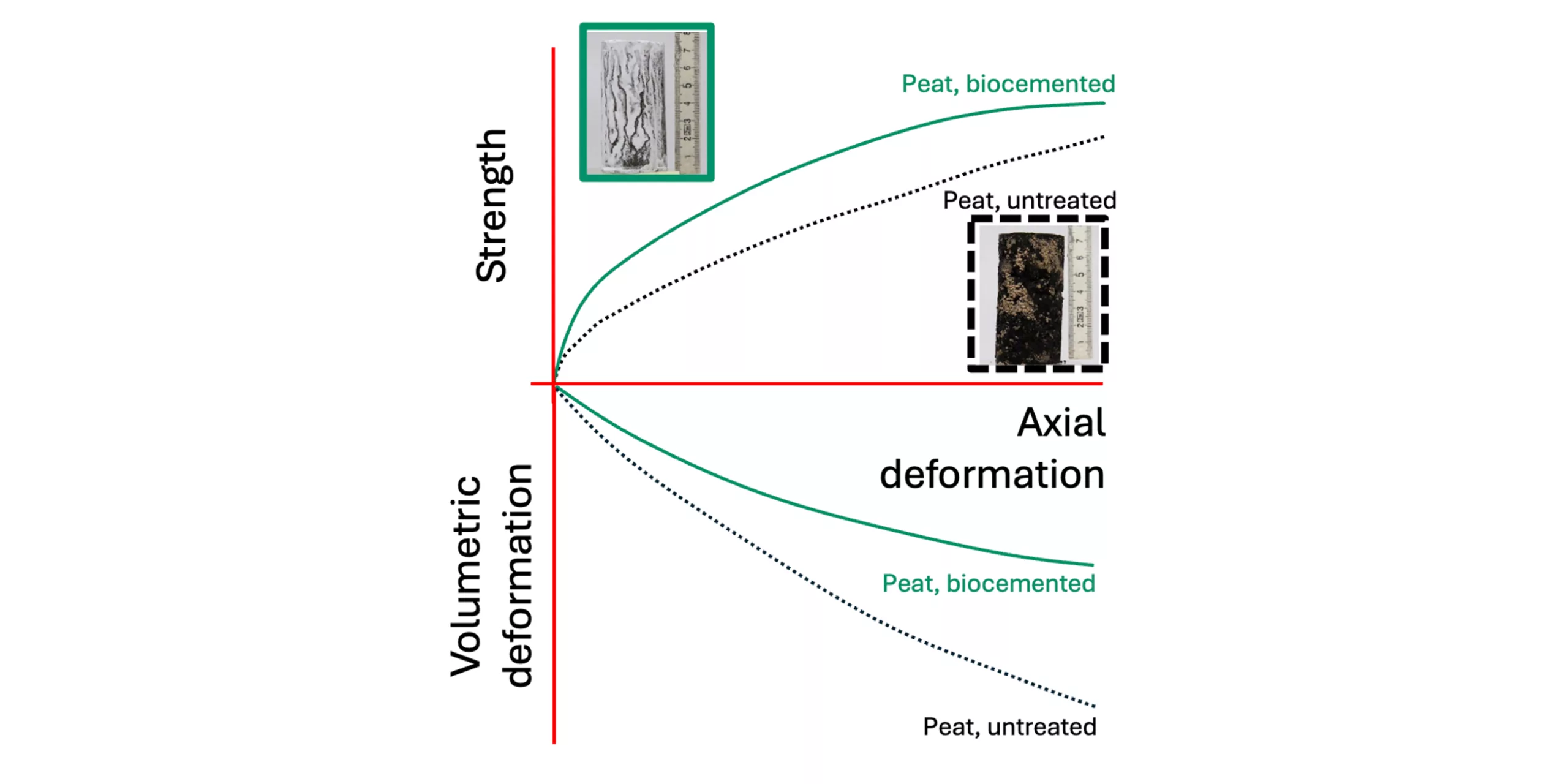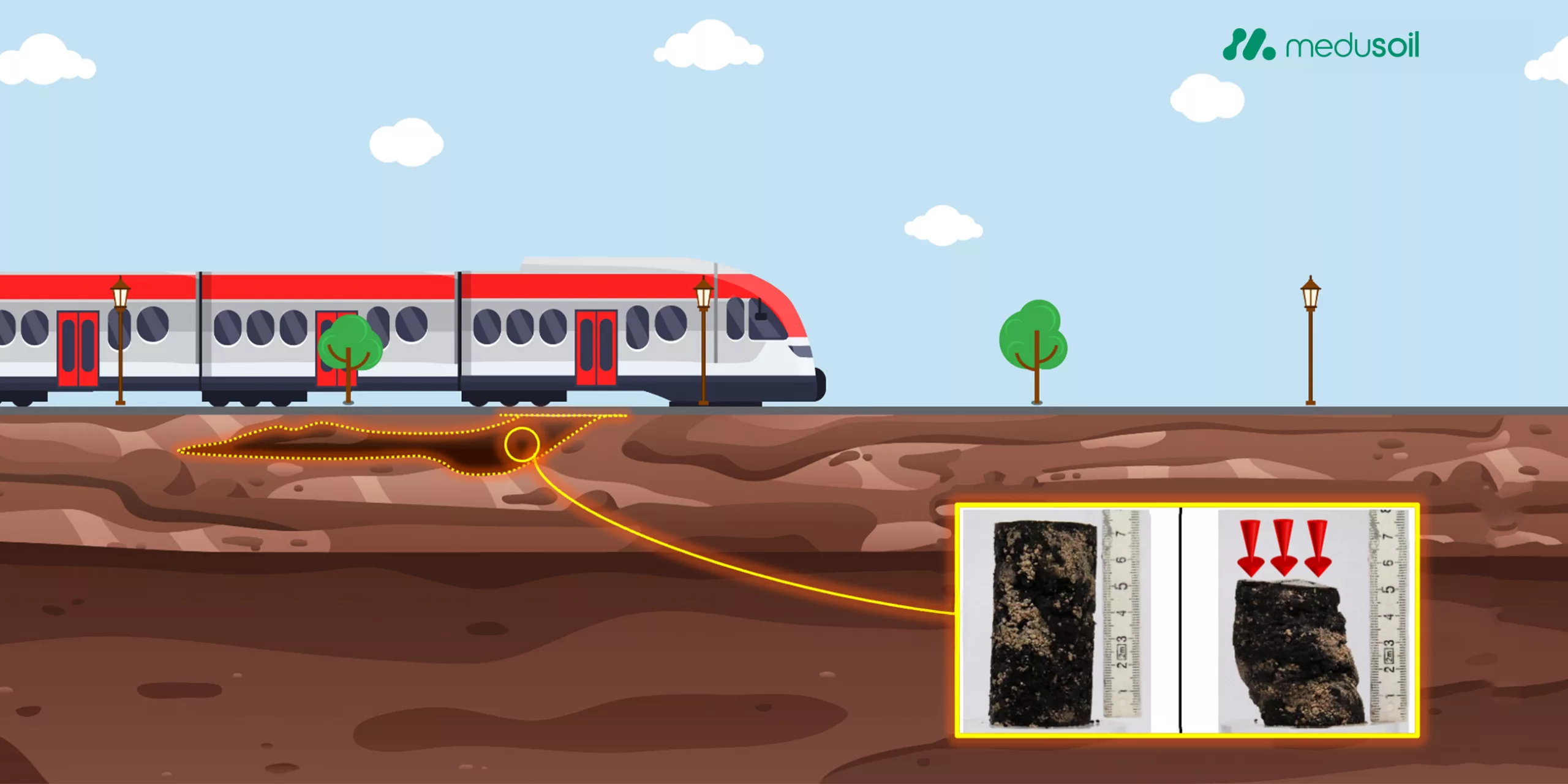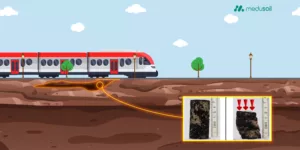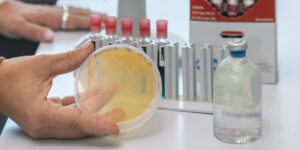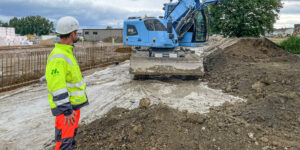Peat soils are known in construction for their softness, high water content, and tendency to undergo large deformations under loads—factors that often complicate groundworks and infrastructure development.
In a recent collaboration between Swiss Federal Railways (SBB/CFF), Medusoil, and the AMIGA group, a practical question was addressed: Can peat soils respond positively to biocementation, or do they represent a bottleneck for this type of soil treatment?
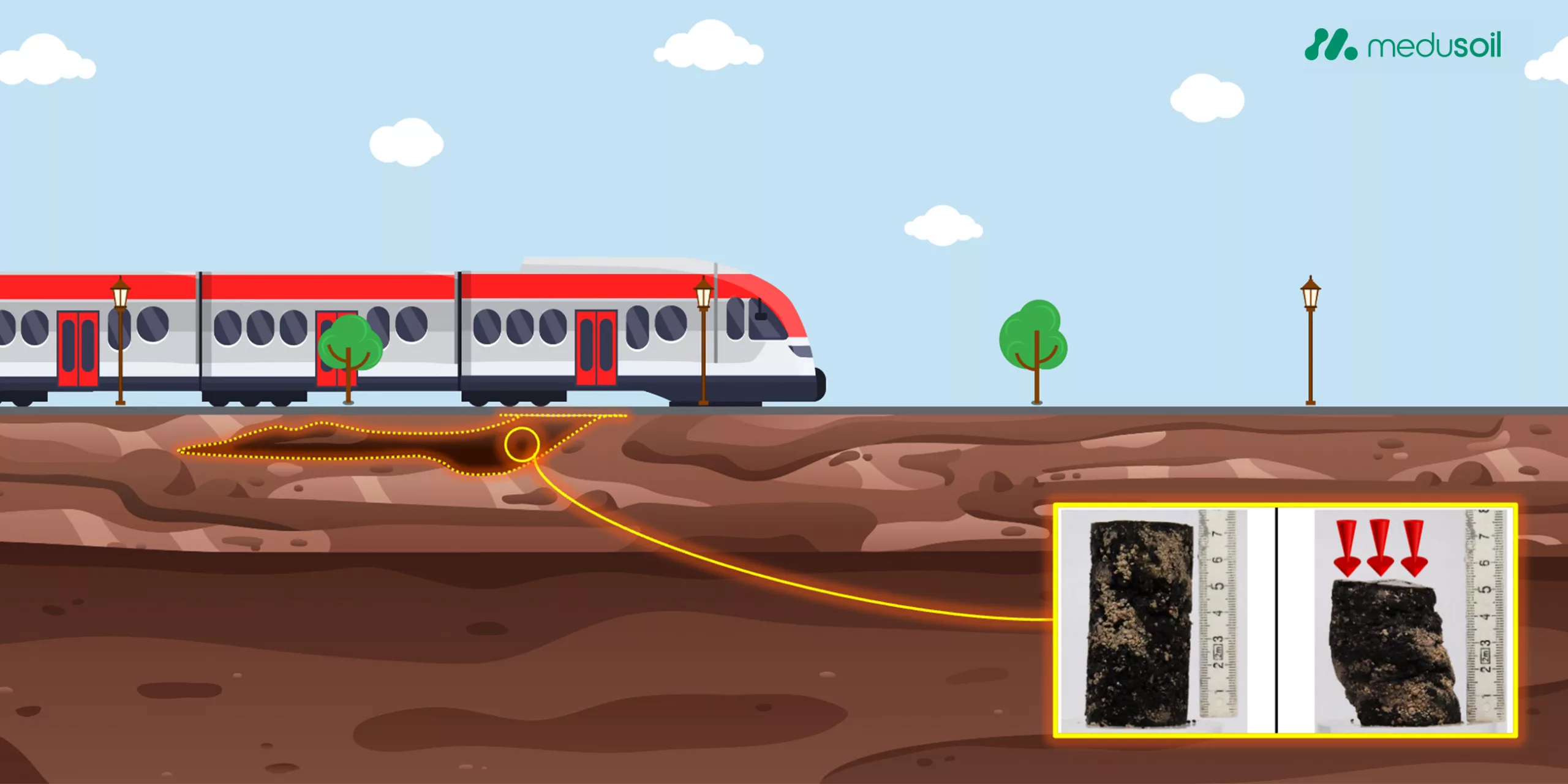
Figure 1 Schematic representation of peat layers found beneath shallow railroad embankments and the deformations they undergo under loading.
Biocementation, a method that strengthens soils through the controlled formation of calcium carbonate, has already shown its potential in sandy and gravelly soils.
This campaign looked at how it behaves in less conventional conditions.
Peat soil samples (silty peat to peaty silts), taken from an SBB site during a recent geological investigation, were treated using Medusoil’s infiltration method.
The aim was to see if improvement is at all measurable to subsequent proceed with a site campaign and dynamic loading conditions.
The results of the treatment were encouraging from a technical standpoint.
Treated peat samples demonstrated a behavior which confirms globally greater strength.
More precisely an increase in strength, particularly noticeable in the early stages of deformation, indicating an improved load-bearing response.
In parallel, overall settlement was reduced by up to 50% compared to untreated material, suggesting a meaningful enhancement in volumetric stability.
Physicochemical analyses also confirmed the formation of calcite, even under the slightly acidic conditions typical of peat, showing that the biocementation process remains active in such environments.
These findings suggest that peat soils may not represent a bottleneck for biocementation and provide a foundation for continued development of this sustainable ground improvement technique in challenging soil contexts.